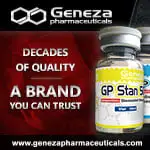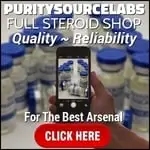Another member has asked me about what i know regarding the accusation that chinese testosterone enanthate is contaminated with carbolic acid (phenol) and that this contaminant causes extreme pain.
A proper manufacturing facility be it legit in China or [UG here in N.A. goes through a series of steps and purifies by minimum a recrystallization of each intermediate. The last step in the production of test enanthate is of course the esterification to the enanthate ester. If procedure has been followed they have gone into this step with clean base, an insoluble intermediate and therefore likely of high purity. So really the last step or the esterification is the only step of interest. This step usually entails a reaction of pyridine and the corresponding acyl chloride (for the enanthate ester) with test base, no phenol is introduced at any point, nor is it at any step regardless of whether the lab's feedstock is diosogenin, dhea, diol or dione or other.
So this means that carbolic acid (phenol) must intentionally be introduced. Enanthate is extrememly soluble so there is no need for it there to increase solubility so why add it if it causes pain. Well, the fact is it does not cause pain, it is a topically active freezing agent, besides we are talking powder not oil so I would have to say that in absence of gcms or other form of analysis to prove this carbolic acid contamination that unless the lab or plant is actually trying to manufacture a pandocrine type ether that this accusation is highly unlikely and certainly not the source of pain in Chinese enanthate. **note** it is redundant to say chinese prior to any steroid powder, there are very few places manufacturing this stuff in a synthetic environment
If anyone knows me to be wrong please speak up
A proper manufacturing facility be it legit in China or [UG here in N.A. goes through a series of steps and purifies by minimum a recrystallization of each intermediate. The last step in the production of test enanthate is of course the esterification to the enanthate ester. If procedure has been followed they have gone into this step with clean base, an insoluble intermediate and therefore likely of high purity. So really the last step or the esterification is the only step of interest. This step usually entails a reaction of pyridine and the corresponding acyl chloride (for the enanthate ester) with test base, no phenol is introduced at any point, nor is it at any step regardless of whether the lab's feedstock is diosogenin, dhea, diol or dione or other.
So this means that carbolic acid (phenol) must intentionally be introduced. Enanthate is extrememly soluble so there is no need for it there to increase solubility so why add it if it causes pain. Well, the fact is it does not cause pain, it is a topically active freezing agent, besides we are talking powder not oil so I would have to say that in absence of gcms or other form of analysis to prove this carbolic acid contamination that unless the lab or plant is actually trying to manufacture a pandocrine type ether that this accusation is highly unlikely and certainly not the source of pain in Chinese enanthate. **note** it is redundant to say chinese prior to any steroid powder, there are very few places manufacturing this stuff in a synthetic environment
If anyone knows me to be wrong please speak up


 Please Scroll Down to See Forums Below
Please Scroll Down to See Forums Below 










